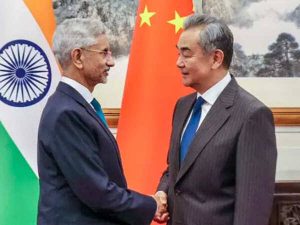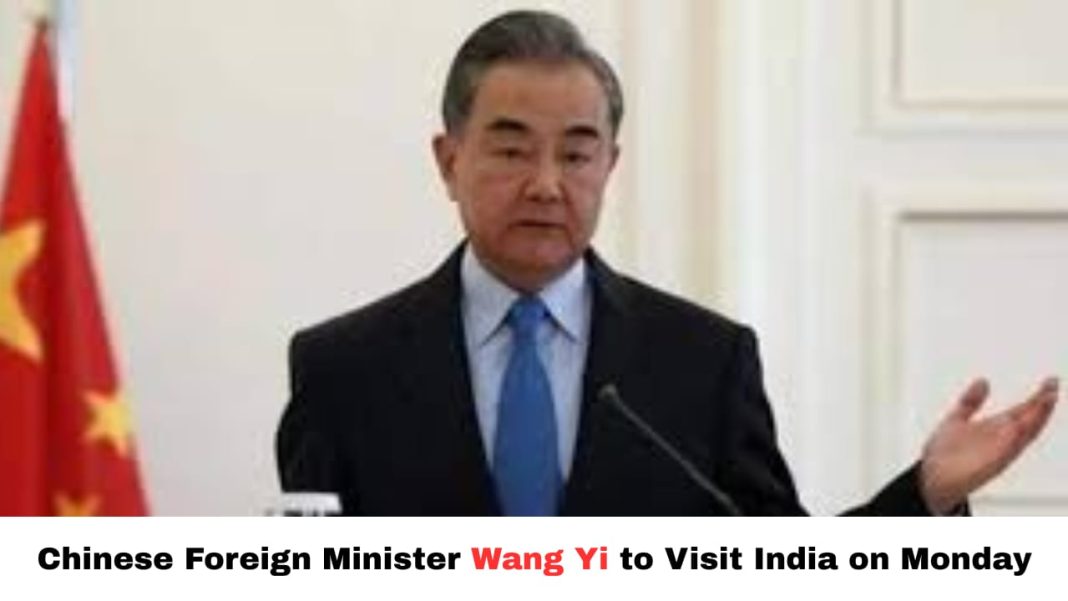Digital News Guru National Desk:
China’s Wang Yi Set to Visit India: A Two-Day Diplomatic Push to Ease Tensions
Chinese Foreign Minister Wang Yi is scheduled to arrive in New Delhi this coming Monday, embarking on a two-day visit aimed at restoring diplomatic momentum between the two Asian giants. Sources from both the Chinese Foreign Ministry and India’s Ministry of External Affairs (MEA) have confirmed the visit, set for August 18–19, 2025.
A Renewed Dialogue after Years of Strain
Wang Yi’s visit marks only the second high-level engagement since the deadly border clashes of 2020, signaling a growing thaw in relations. Broadly, it follows a 2024 agreement on joint border patrolling, a key breakthrough that helped ease years of military standoff, halted trade flows, and disrupted people-to-people ties across the Himalayas. Since then, incremental steps—including resumption of the Kailash Mansarovar pilgrimage, revival of visas, and renewed trade and flights—have paved the way for today’s diplomatic opening.

The Agenda: Border Talks under SR Mechanism
At the heart of the visit is the 24th round of the Special Representatives’ (SR) Talks on the India–China boundary question. Wang Yi will engage directly with India’s National Security Advisor, Shri Ajit Doval, working through a dialogue mechanism that has proved vital in conflict management.
In addition to these discussions, Wang Yi is slated to meet with External Affairs Minister S. Jaishankar for bilateral talks, adding another diplomatic layer to the visit.
Strategic Timing Ahead of Prime Minister Modi’s SCO Visit
Wang Yi’s visit is strategically timed—landing just as India prepares for Prime Minister Modi’s upcoming trip to China for the Shanghai Cooperation Organisation (SCO) Summit scheduled for August 31–September 1 in Tianjin. It also sets the stage for a possible in-person meeting between Modi and Chinese President Xi Jinping, who haven’t met in person in seven years.
This diplomatic choreography—high-level dialogue followed by a summit—suggests an Indian move to stabilize borders and foster trust before the multilateral SCO engagement.
Broader Diplomatic Context: A Ripple Effect of U.S. Pressures and Trade Realignment
A relevant undercurrent to this visit is the shifting global diplomatic environment, particularly involving the U.S. under President Trump. With India facing fresh trade tariffs from Washington, both Delhi and Beijing appear to be recalibrating relations, leveraging their growing ambivalence toward traditional alliances.
In recent weeks, conversations have broadened to include resuming direct flights, expanding border trade via Himalayan crossings, and even easing investment restrictions on Chinese firms—moves designed to reinvigorate economic and people-to-people connections.

Key Expectations and Challenges Ahead
- Trust Restoration: With the SR mechanism at work, India and China hope to build confidence through incremental but concrete steps—such as joint patrols, easier travel, and trade expansion.
- Border Stability: The talks are expected to address disengagement zones and manage friction along the Line of Actual Control (LAC) through renewed confidence-building measures.
- Economic Reignition: The resumption of flights, revival of trade, and easing of restrictions signal a strategic economic thaw, symbolically crucial even if trade volumes remain modest.
- Diplomatic Reset for Global Forums: As both nations eye collaboration in multilateral forums like SCO, BRICS, and G20, managing bilateral friction is essential for broader geopolitical alignment.
However, challenges persist. Strategic mistrust remains entrenched, border demarcation remains pending, and neither side wants optics suggesting undue reliance on the other, especially in the face of evolving U.S.-India dynamics.
Historical Review and Diplomatic Roadmap
Historically, the SR framework has served as a consistent pathway for dialogue since prominent India–China summits decades ago. Talks resumed in earnest after the October 2024 agreement on LAC disengagement, following Modi–Xi deliberations in Kazan, Russia.
Since then, positive steps have included:
- January 2025: Resumption of direct flights after a five-year break.
- April 2025: Restart of Kailash Mansarovar pilgrimage.
- July 2025: Restart of tourist visas for Chinese nationals and growing economic exchange.
Alongside, defence and diplomatic outreach — such as India Defense Minister Rajnath Singh’s June 2025 meeting in Qingdao — have stressed permanent engagement mechanisms to de-escalate tensions.

Looking Forward
As Wang Yi lands in Delhi on August 18, all eyes will be on how dialogue reshapes the fragile peace. While expectations remain conservative, the visit could catalyze:
- Clearer timelines for border management,
- Incremental reopening of transit routes,
- Broader diplomatic alignment ahead of the SCO Summit.
India, for its part, views this visit as both pragmatic and strategic: while it reaffirms India’s commitment to dialogue-based conflict management, it also signals to global observers that stability and sovereignty are being pursued without compromising strategic autonomy.
In summary, Wang Yi’s upcoming visit to India is more than a diplomatic courtesy—it is a calculated, cautious step toward restoring normalcy in bilateral ties, catalyzed by economic pragmatism and timing ahead of broader multilateral engagement. Whether it delivers meaningful outcomes or is merely a symbolic step, it will certainly shape the tenor of India–China diplomacy in the weeks to come.
You May Also Read: Nagaland Governor La Ganesan died in Chennai at the age of 80








